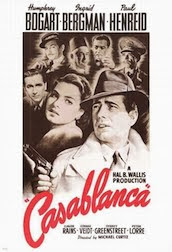I'm behind on my blog-reading (I have an RSS reader that sucks in all the blog posts I think I want to read and stores them in a handy place--I'm sure you know all this, but I'm still fascinated by the technology...). Anyway, I was slogging through my blogs and came to
a post from Sept 30 by Meg Rosoff over at Writer Unboxed. What she said spoke directly to me. Allow to quote a bit of that blog for you here:
(This is Meg, photo courtesy of Writers Unboxed)
Whenever I do any teaching, I inevitably get twenty-five middle aged aspiring writers sitting around a table looking mournful. "I got halfway through my book," they all say, "and then I got stuck."
This is when I think a cattle prod would come in handy for creative writing classes. "Of course you get stuck you silly people," I practically scream. "Getting stuck is what happens. Everyone gets stuck!"
"Well, so, what do we do?" they chorus in funereal tones.
"You work harder," I tell them. "You snap at your family, you feel depressed, you waste time on Facebook and Twitter, you clean the house (but only when you're really desperate), you devour whole cakes, you pace, you despair. You read other peoples' books that are better than any you'll ever write and you cry. Eventually you get so desperate that you just write some nonsense, and if you're lucky, something in that nonsense clicks with something in your brain, and you start to see a way through. If you're not lucky, it doesn't click, and you have to be depressed for another day. Or a week or a month."
They stare at me, mouths open, twenty-five identical versions of Munch's portrait, The Scream.
"Yup," I say. "That's what you do. That's what I and everyone I know does, anyway."
(End quote)
Did that speak to you, too? Did you read that and think, "YES! That's exactly the way it works for me. Why didn't anyone warn me, before I started on this journey of learning how to write, that it'd be FULL of days and weeks and months like this?"
I'm just now coming off a 2.4 month period of this "being stuck" business. I haven't written anything new aside from blog posts. I'm not sure they count. Anyway, my two current WIPs (works in progress) are boring, and I don't want to open them up. I'm so frustrated, my muse showed up one day and I kicked her out the back door, wanting nothing to do with her or with writing. Does that happen to anyone else? Apparently so, according to Meg.
I managed to snap myself out of it, and I'm going to tell you what I did. It might not work for you, but it worked wonders for me and my awesome critique buddy, Melody. Get ready to take notes, because here it is, in a numbered list (because I love lists and they make me feel like I accomplished something, which I did--because now I have a LIST when I didn't have one before, but I digress):
1. I whined to my friend Melody that I hadn't written anything since July. She whined back that SHE hadn't written anything in months, either. We both silently agreed that coffee and pastry were not going to work this time. It was the end. Our writing careers were over. We both have agents, but neither of us is published, and Life Just Sucks.
2. Knowing I wasn't alone in my despair actually made me feel a little better. I told Melody about a stupid dream I'd had the night before, starring her and I as twin sisters fighting crime like superheroes. By the way, she's Indian and I'm Scandinavian. We don't look anything alike, in real life or in the dream. I know, stupid dream, but it was funny and I got a kick out of sharing it with her.
3. Melody agreed that it was a hilarious dream and said I should write it.
4. I opened a clean Word document and started writing. Pretty soon, I had nearly 4,000 new words. And they were funny! It was a genre I'd never tried before (urban fantasy), it included more humor than I'd ever used in a written work, and best of all, I had NEW WORDS. I sent it to Melody and told her to write the next chapter. Within a day, she sent it back to me with another 1,000 words written. For the first time in ages, she'd written New Words, too! She was excited to be out of The Funk, just like me.
We haven't taken the story any further than that. And it doesn't matter if it never goes anywhere else. The fact is, it pulled BOTH of us out of our writing funks. My creative juices are flowing again, and I want to write. More importantly, I want to write something my agent would love to read. Like maybe the piece she asked for back in July.
Bottom line: when you're in a funk, pick a genre you've never tried before, go to your best critique buddy, and write something together. What's the worst that could happen? You don't write anything? You're already writing nothing. But maybe you'll get Something out of it and unstick each other. It's worth a shot.
Share with me - what have you done in the past to get out of a writing funk? We all get stuck. How did you get unstuck?
-Sonja

















